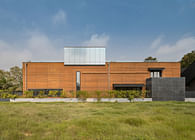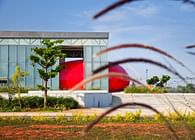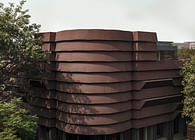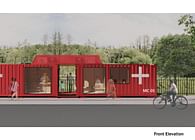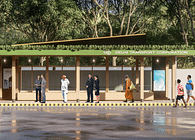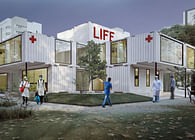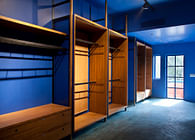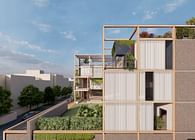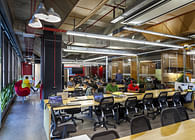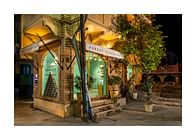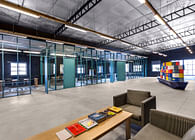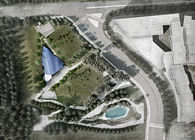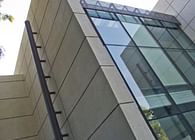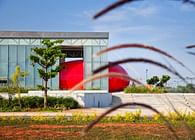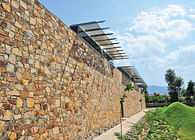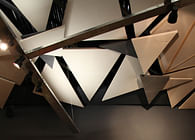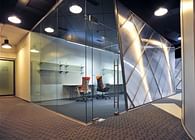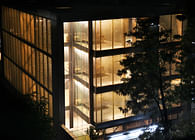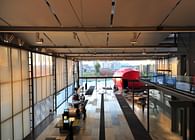
New Delhi, IN
The current pandemic (COVID-19) has by now demonstrated itself as a global challenge that has affected all aspects of our daily lives. As 'social distancing' becomes integral to our spatial engagements, new definitions of social proxemics are going to emerge. The appropriation and accommodation of these definitions, subsequent rules and patterns of social engagements, shall most definitely impact the two most essential aspects of our urban life - commutation & communication.
The way we move out of our homes, cross the streets, pass our neighborhoods, ply the arteries across the districts, cities and regions determines our urban existence. Mobility binds cities, societies, and civilizations together. The current pandemic has clearly disrupted the urban mobility. What was just two months ago a necessity in conducting our daily routines has been disrupted to such an extent that 80–90% of intercity passenger demand for travel is expected to be eliminated entirely in 2020 alone. The existing frameworks, systems, tools and technologies that aid urban mobility are bound to lose relevance in the present forms. We need to review, rethink, redefine and most importantly redesign these to adapt to the emergent commute proxemics.
Last century saw the cities across the globe transform into 'car cities'. Rapid urbanization and increased economic empowerment meant the urban dwellers preferred the faster 'personal' transport (motor vehicles - cars, bigger cars, motorbikes) to public transport. Possession of self-owned vehicles, became synonymous with social elevation and imparted a sense of personal gratification.
The current crisis, given the extent and widespread external effects on urban mobility, comes with a possibility of renewed distrust of public transport in its existing form. With concerns around personal proxemics, social distancing, health and safety, the comfort/speed of destination to destination transit might usher an increased rush into acquisition and use of personal vehicles. The current models of urban public transport need to undergo transformation, evolve and look into technologies and alternate models (micro-mobility as well as macro-mobility) with a new set of parameters that integrate the benefits of the personal vehicle as well as offsets all the disadvantages of the same, and discourage the use of the personal vehicle for travel. Conformation to social distancing, adequate sanitation measures for the commuters, hygiene of the boarding vehicles, environmentally conscious technology, and economical rapid movement, will need to be addressed in the newer models of any public transport system in order to return to its central role in moving the populace in urban settings.
The Capsule for Automated Transit (CAT) , a prototype for personal rapid transit is designed with an aim to overcome the stated inefficiencies. CAT is a public transport mode featuring automated pod vehicles operating on a network of specially built automated guideways (on ground/elevated). CAT moves small groups (1 to 4 commuters max) in AI automated pods on fixed guideways that are arranged in an extensive network topology, with all stations located on sidings, and with frequent merge/diverge points. Commuters shall board a capsule immediately upon arriving at a station, take relatively direct routes to their destination, and move nonstop, from point-to-point bypassing all intermediate stations without stops or transfers (like a cab service).
With an aim to offset all the inefficiencies of the current public mobility vehicles and to address the post pandemic emergent proxemics, CAT is designed to provide:
• Distanced Mobility: Flexibility of choosing a singular travel and compartmentalized/segregated multi-user travel adhering to new commute proxemics and ensuring social distancing.
• Sanitation facilitated mobility: Adequate automated sanitation for the commuters and frequent station and rolling stock cleaning procedures ensuring hygiene control of the boarding vehicle.
• Sustainable Mobility: Electrically operated capsules fitted with economical zero energy ecologically sensitive technology. Zero emissions and silent/no-noise travel.
• Rapid Timed Mobility: Personal transit equitable to driving a driverless car. No time lags due to congestion/jam factors and therefore a precisely timed destination to destination travel.
CAT features: Comfortable, Robust and aesthetically neat capsule body in Carbon-fibre and Perspex, single-side or double-side automated electric doors to facilitate no touch entry and exit into the capsule. Sanitation valve for in-capsule passenger sanitation and AI Monitored operation control with 2-way communication between passenger and control team. In capsule LED Screen for Transit Information + Knowledge / Entertainment Monitor. Adjustable seats to adapt to the children and specially abled passenger and automated Capsule Sanitization post off-boarding of the last commuter.
Status: Unbuilt

